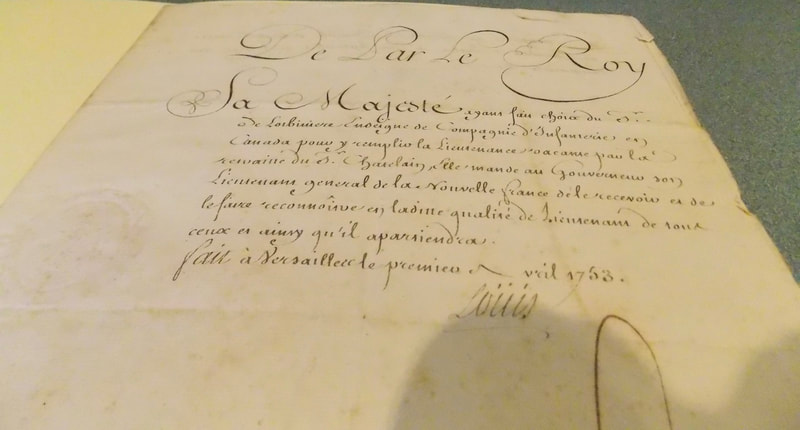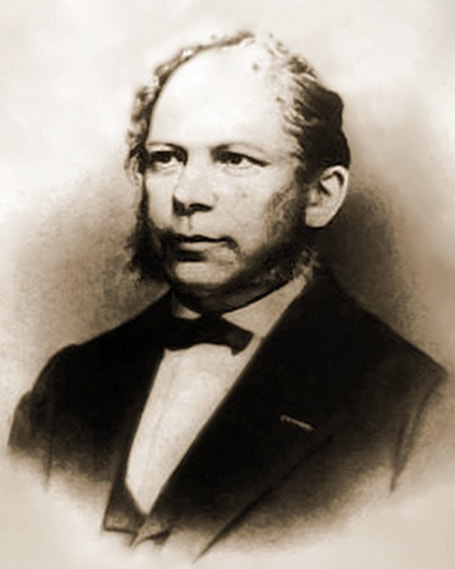beginning at 7:00 pm on Wednesdays.
at the church of Christ in Carthage, Missouri, south of the Ford dealership
PLEASE JOIN US!
Michel Chartier de Lotbinière, Marquis de Lotbinière
This document was written in French, and I had to attempt to decipher it. Not being acquainted with the language made that difficult. I did catch the date - April 1, 1753. The two pages were sealed together, and I wasn't about to break the seal; however, I could curl the pages back to see more writing on the inside. The curator, Matt Keagle, revealed that these were commission papers for a French soldier. When we asked about the signature, Louis, he shared that it was King Louis XIV, and that these were the commission papers for Michel Chartier de Lotbinière, Marquis de Lotbinière; that is to say that these were official papers for the man who designed Fort Ticonderoga. There are so many reasons to love the chance to hold this document.
Montcalm's CrossIncidentally, following the Battle of Carillon during the French and Indian War, the Marquis de Montcalm raised a cross inscribed with the message and its rough English translation seen here (below). He took no credit for the victory and gave no credit to his strategy or his men. Instead, he credited his God, demonstrating that the French and Indian War was not only a war for territory, but that it was also a religious war of ideals. Chretien! Ce ne fut point Montcalm et la prudence, |
Our focus for this study hinges on answering these two big questions. The goal is to get closer to the answers each week in our class.
Is the Bible accurate and dependable?
Does God Communicate with Us Outside of the Bible?
|
|
|
St. Catherine's MonasteryJust as Fort Carillon (Ticonderoga) was not built in the best, strategic location, neither was St. Catherin's Monastery. Built as a fortress and to guard the monks' safety, its granite walls are also said to guard the holy ground where Moses spoke to the Lord in the burning bush (Exodus 3:1-6). Who was Catherine? That information is in our book on p. 44. |
|
Of what must have originally comprised about 730 leaves, 393 remain, 245 of the Old Testament and 148 of the New. The leaves are of very fine vellum, measuring approximately fifteen inches square. The text is written four columns to a page, except in the case of seven poetic books of the Old Testament where the text is in only two columns. The handwriting is large and clear, simple yet magnificent.
| | In addition, wrote Lightfoot, "The style of its script, along with other factors, make it quite certain that it was copied about the middle of the fourth century." By studying the different spellings of certain words, it is apparent that three scribes were responsible for copying the text. This is the oldest written text of the New Testament. |
So how important is it to you that the Bible can be proven true? Do you believe there is irrefutable evidence to its validity? Is proof something that strengthens your personal faith in the existence of God?
Should faith alone be enough to drive you to drive you to your knees? Is "blind" faith a stronger kind of faith? If so, then why did God provide so much evidence?






















































